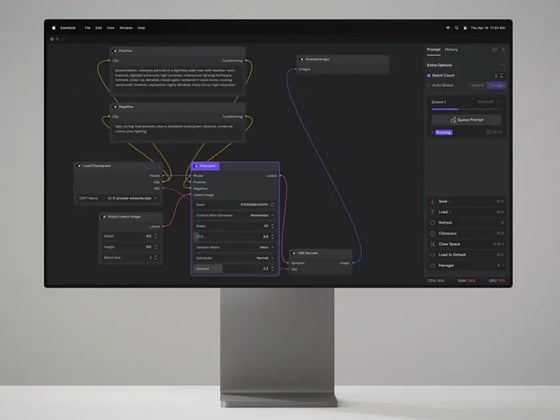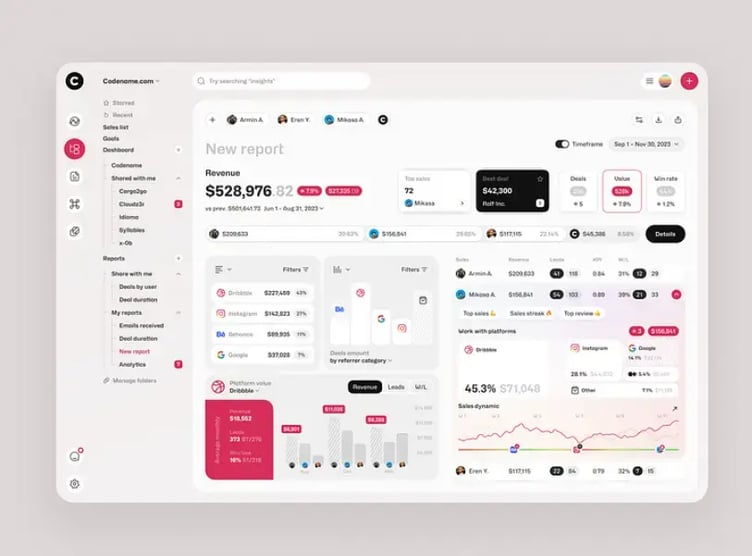
From Prototype to Market Leader: Mapping the Web Development Lifecycle
In 2025, launching a web platform is no longer a task confined to coding or visual design - it is a comprehensive, strategic process. Leading businesses treat web development as a lifecycle, where each stage - from initial ideation to market scaling - is carefully planned and executed to maximise user satisfaction, engagement, and business outcomes.

Stage 4: Testing and Quality Assurance
No platform can achieve lasting success without rigorous testing and quality assurance. This stage ensures that every feature works as intended, performance meets expectations, and users experience a seamless, secure platform. QA identifies issues early, reducing costly fixes post-launch and building trust with end users. Integrating React JS services into the development process helps ensure that interactive components are reliable, performant, and maintainable, further enhancing the overall quality of the platform.
Essential QA Practices
- Functional Testing
- Verify that all features operate correctly across different devices, browsers, and scenarios.
- Confirm workflows, forms, buttons, and interactive elements perform as designed.
- Performance Testing
- Measure page load times, server response, and overall responsiveness under typical and peak traffic conditions.
- Identify bottlenecks, optimise rendering, and ensure smooth navigation.
- Security Audits
- Conduct vulnerability scans and penetration testing to detect potential threats.
- Ensure compliance with regulations such as GDPR, CCPA, and accessibility standards.
- User Acceptance Testing (UAT)
- Involve real users to validate the platform meets expectations and business objectives.
- Collect feedback on usability, navigation, and overall experience to refine the final product.
Outcome: Comprehensive QA reduces post-launch bugs, enhances user confidence, and ensures a high-quality experience that supports engagement, retention, and conversions.

Stage 5: Launch and Deployment
Deploying a web platform is not simply a matter of making it live. It requires a carefully coordinated process to ensure a smooth transition, maximum visibility, and immediate adoption by users. Proper planning minimises downtime and early-stage issues, giving the platform a strong start.
Critical Steps
- Staging Environment
- Deploy the platform in a mirrored environment to test deployment scripts, server configurations, and integrations without affecting live users.
- Catch potential errors and conflicts before public release.
- SEO and Analytics Setup
- Configure metadata, sitemaps, and indexing to maximise search engine visibility.
- Ensure analytics and tracking tools are accurately capturing user behaviour from day one.
- Monitoring and Alerts
- Implement real-time monitoring for uptime, performance, and errors.
- Set up alerts for critical issues to respond immediately, preventing downtime or degraded user experience.
- Marketing Coordination
- Align launch announcements with PR campaigns, social media promotions, and email outreach.
- Maximise awareness, drive traffic, and encourage early adoption among target audiences.
Impact: A well-executed launch ensures users can access the platform reliably, discover its features easily, and engage from day one, laying the foundation for long-term growth and success.
Stage 6: Post-Launch Optimisation
A web platform’s lifecycle does not conclude with its initial launch. In 2025, leading businesses understand that continuous optimisation is crucial for maintaining performance, user satisfaction, and competitive edge. Post-launch activities allow teams to respond to real-world data, refine features, and ensure the platform evolves alongside user expectations and market trends.
Key Practices
- Performance Monitoring
- Effective web platforms rely on continuous performance monitoring to maintain optimal user experiences. Businesses should track critical metrics such as page load times, server response rates, and system uptime in real-time.
- By identifying and resolving performance bottlenecks quickly, organisations prevent slow-loading pages or errors that frustrate users and reduce engagement.
- Monitoring error logs, unexpected crashes, and other technical issues proactively allows teams to address problems before they impact a broader audience, ensuring a consistently smooth and reliable platform experience.
- User Analytics
- Understanding how users interact with a web platform is essential for data-driven improvement. Businesses should analyse key behavioural metrics including session duration, bounce rates, navigation patterns, and conversion funnels.
- These insights reveal which elements of the platform engage users effectively and which areas require optimisation. By leveraging this data, teams can prioritise enhancements that increase retention, improve overall user satisfaction, and drive meaningful engagement, turning analytics into actionable strategies for continuous growth.
- Feature Iteration
- Implement updates and new features based on actionable data and user feedback.
- A/B testing and prototype validation allow teams to refine experiences before large-scale rollouts, reducing risk and optimising impact.
- Security Maintenance
- Regularly update software, plugins, and integrations to patch vulnerabilities.
- Continuously monitor for threats, ensuring compliance with privacy regulations and industry standards.
Tip: Treat post-launch optimisation as an ongoing commitment. Platforms that consistently improve in performance, usability, and security remain competitive, agile, and aligned with evolving business objectives.
Stage 7: Scaling to Market Leadership
The final stage of the web development lifecycle focuses on strategic growth, transforming a functional platform into a dominant market presence. Scaling involves expanding capabilities, reaching new audiences, and leveraging technology to create unique value that competitors cannot easily replicate.
Growth Tactics
- Global Expansion
- Support multiple languages and localise content to resonate with regional audiences.
- Ensure regional compliance with laws, accessibility standards, and privacy regulations to build trust in new markets.
- Advanced Integrations
- Implement AI-driven personalisation, recommendation engines, and automation tools to enhance user engagement and conversions.
- Connect seamlessly with CRMs, marketing platforms, and analytics systems for holistic data-driven decision-making.
- Omnichannel Experiences
- Ensure consistent user journeys across web, mobile, and IoT devices.
- Synchronise data, interactions, and notifications across all channels to increase engagement and loyalty.
- Brand Differentiation
- Introduce unique features, custom micro-interactions, and tailored UX that competitors cannot easily replicate.
- Strengthen brand identity through design consistency, performance, and innovative experiences.
Outcome: Platforms that follow a growth-focused lifecycle evolve from market entry points to industry leaders. By continuously optimising performance, expanding globally, and innovating with technology, businesses generate higher revenue, build loyal user bases, and secure lasting competitive advantage.
The Strategic Role of Web Development Partners
In 2025, businesses that thrive understand that their web development agency is far more than a service provider; it is a strategic partner and a growth architect. The most successful companies treat their web development partners as integral contributors to long-term business outcomes, rather than simply vendors who execute a one-off project.
The right agency brings expertise across the entire web development lifecycle, from initial ideation and prototyping through to full-scale deployment and iterative post-launch optimisation. They design platforms that are not only visually compelling and technically robust but also strategically aligned with revenue goals, user engagement objectives, and brand positioning.
Choosing the right partner means working with a team that can implement mobile-first architectures, AI-enabled personalisation, and high-performance platforms that meet the demands of modern users. It requires strategic alignment, where the agency deeply understands the company’s KPIs, growth targets, and competitive landscape, and ensures that every technical decision supports those objectives.
Beyond initial launch, a strong partner remains committed to continuous optimization, using real-time analytics, user feedback, and iterative improvements to refine the platform and adapt to evolving market conditions. By embedding these capabilities into every phase of development, businesses transform their websites into engines for growth, engagement, and long-term scalability.
Conclusion
Adopting a lifecycle mindset is critical in the modern digital environment. From ideation and prototyping to development, launch, post-launch optimisation, and scaling to market leadership, the web development lifecycle is a continuous journey rather than a finite project. Businesses that embrace this approach reduce the risks associated with costly revisions, avoid common performance pitfalls, and deliver superior user experiences that drive engagement and loyalty.
Lifecycle thinking ensures that performance, security, and scalability are built into the platform from day one, rather than treated as afterthoughts. In 2025, websites are no longer static assets; they are dynamic, strategic growth engines. By mapping and executing the full lifecycle, companies move confidently from prototype to market leader, transforming their digital presence into a competitive advantage that drives long-term business success.
Mrityunjay Singh
Leave a comment
Your email address will not be published. Required fields are marked *

